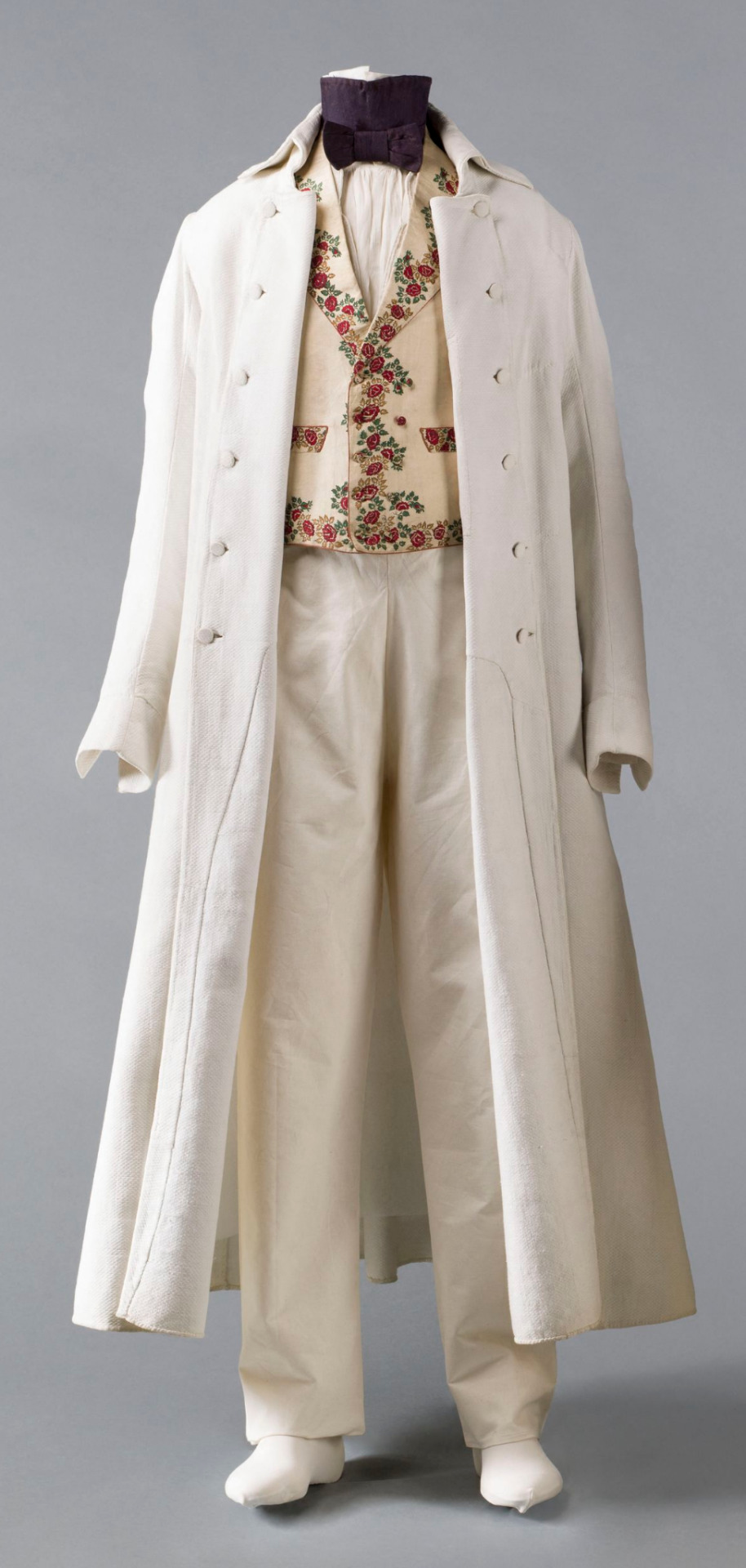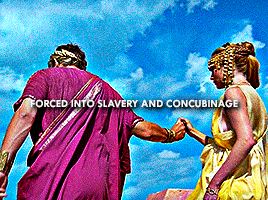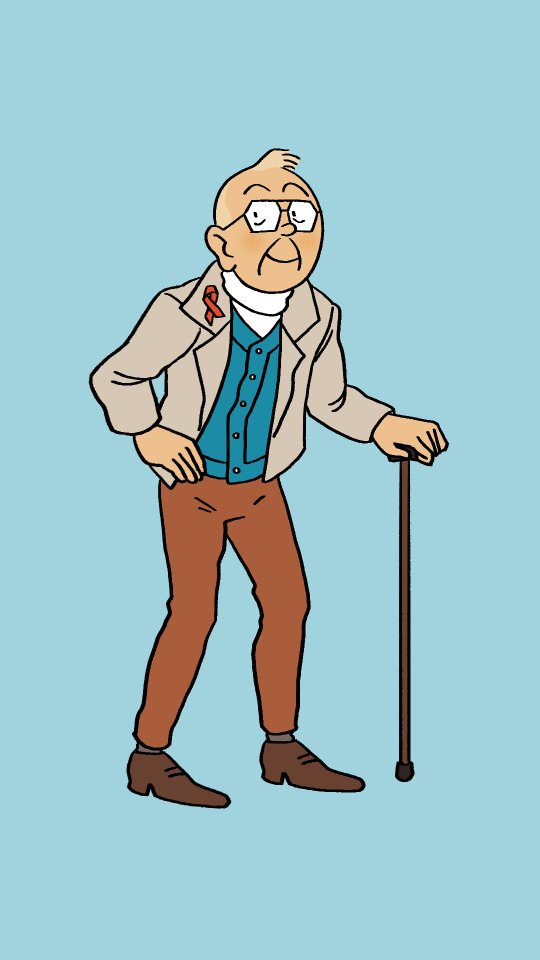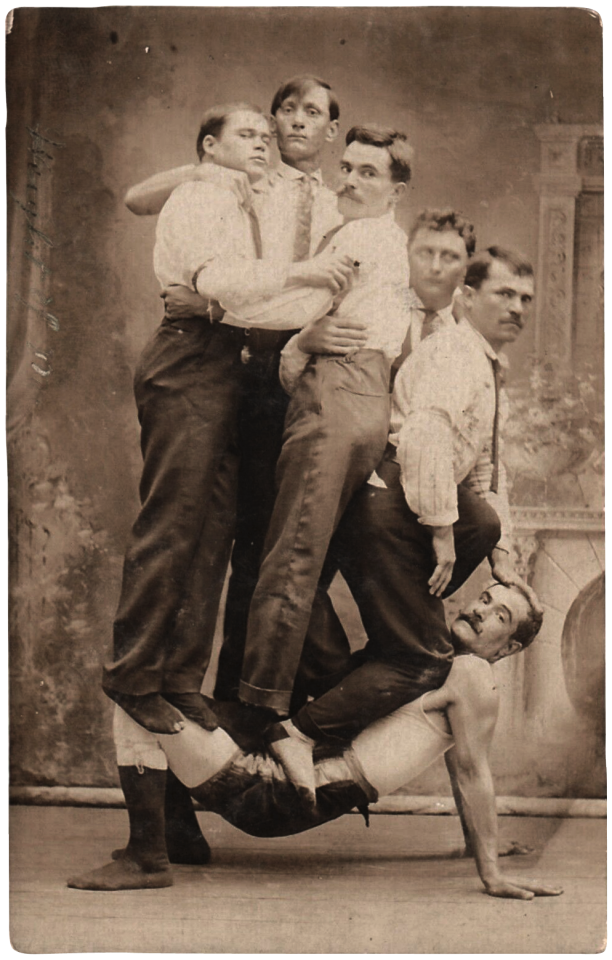#historical interest
Text
From New International, Vol.VIII No.9, October 1942, pp.278-281.
Transcribed by Ted Crawford.
Marked up by Einde O’Callaghan for ETOL.
The following document by no means deals with working class policy in Palestine as such. Neither is it intended to describe the economic conditions and problems of its growth. The discussion is limited to those topics relating to institutions which are supported by the overwhelming majority of the Jewish labor movement in Palestine in its aspiration to create a Jewish or partly Jewish state. Expressing my fullest agreement with the aim of those striving for the creation of a Jewish homeland, it is nevertheless my contention that a long range perspective will prove the present policies in Palestine erroneous and only capable of giving the Jews an immediate advantage at the sacrifice of their class positions. But the sacrifice of class positions is never in the interest of any minority, for only the social revolution can in the last analysis provide favorable ground for the solution of the national question. In this sense, Zionism must be subordinated to socialism.
Those who search in this thesis for a confirmation or criticism of Zionism will be disappointed. Its sole purpose is to dispel any illusions that the pioneering role, whatever its virtues might otherwise be, has anything in common with internationalism. In my bid for brevity and condensation, I have given whatever background is needed sketchily, since factual material can easily be gathered from other publications.
I – National Land Policy in Palestine
1. At the close of the First World War, 140 Arab land owners owned one-seventh of the area of Palestine. Most agricultural enterprise was conducted under a semi-feudal latifundia system. The Arab peasant, the majority of the population, was directly exploited in this state of serfdom since an external capitalist market for goods thus produced had not as yet been created.
2. Jewish mass immigration into Palestine meant the immigration of capitalism as well. Jewish capital sought returns not only in the industrial enterprise of the cities, but also in land by more rational exploitation. The Arab land holder, through the price obtained in a sale of part of his land to Jews, invested sums on the capitalization of their remaining land. In the extension of the capitalist market into all spheres of Palestinian economy, many Arab fellahin (small peasants) were turned into wage laborers, in addition to the Jewish immigrants.
3. The purpose of Jewish National Funds [1] is to facilitate the settlement of incoming Jews. In undertaking investments felt to be too risky by private capital, Jewish National Funds economically fulfill a pioneering role for private capital to follow. They operate along strictly national lines. Through prevention of speculation, joint-purchase schemes, etc., they attempt to create the conditions most favorable for the acquisition and cultivation of land by Jews, regardless whether by national or private capital.
4. Still considerable sections of the Jewish bourgeoisie in Palestine oppose the national land policy. This, on the one hand, because national capital often proves inconvenient for private enterprise, on the other because Jewish National Fund land harbors and other national funds encourage “dangerous” experiments for it in so far as they demonstrate the superfluousness of the private capitalist. (Contrary to popular belief in radical circles, Jews, not Arabs, are faced by the danger of exclusion from industry.) Nonetheless national ownership of land, although desirable, in and of itself changes nothing fundamental in the economy as long as a capitalist market remains; all that is changed is the share of surplus value accruing to the landlord.
5. Jewish National Funds are progressive to the same degree to which a capitalist economy marks a gain over the outmoded feudal relations of production. They fulfill the objective need for a capitalist economy. As part of the capitalist system, as part of the status quo, as part of the general impotency of the bourgeoisie to carry out that program that marked it as progressive in its infancy, national funds can be no solution to colonization needs, to the agrarian problem, and to the evils caused by capitalism anywhere.
6. National funds, made to function as part of capitalism and in no way designated to oppose that system, therefore naturally lend uncompromising support to British and American “democratic” capitalism which is still in a position to tolerate its already circumscribed economic activities. This even more so since they aim to set up a JEWISH economy in opposition to an ARAB economy in Palestine and are still hopeful of help in this from the Allied powers.
7. Even from the viewpoint of colonization, national funds have always lagged behind needs. Rising land prices, British imposed restrictions, the fact that the Arab land owners will not voluntarily, as a class, allow themselves to be bought out of their privileges, and the elimination of large sections of world Jewry from the contributing lists, all go to prove that Palestine cannot be bought.
8. Rejecting the very idea of the possibility of the attainment of Zionism as long as the barrier of capitalism exists, we cannot possibly support an institution functioning to build capitalism while it in no way aids the development of the subjective factors of class struggle. We cannot risk the spreading of the reformist illusion that capitalism can build Palestine for the Jewish people.
II – The Rentability of the Kibbutzim
9. The kibbutzim (collective settlements) are by no means a unique feature of Palestine; neither are they socialism. The risk of private investments, on the one hand, and the growth of cities on the background of an undeveloped agriculture, on the other, have forged the kibbutz as the instrument of capitalist development in agriculture. The abundance of steady labor (within the kibbutz), an economy of collectivized consumption and the absence of any large agricultural trusts have all combined to make them the most rentable of the various types of settlement. (For statistics on the yearly surpluses of kibbutzim see Weitzman, Rupin, etc.)
10. Yet the kibbutz is the creation of the Jewish working class. Unable to compete against cheaper Arab labor in the Jewish settlements, the first chalutzim banded together into a state of forced communism, since otherwise they would have perished. Soon these groups, with outside help, started their own enterprises on the same basis, the kibbutz now serving as a base (in the same way as the fella, working his paviel, wage-labor in the colonies merely serves as an additional source of income) from which to enter as wage labor in the colonies left to the Arabs meanwhile (see Point 23).
11. An integral part of present capitalist Palestine and not the prototype of the new society, the kibbutz movement nevertheless exerts a strong leftward influence over the whole yishuv. And this, because of the backwardness of the Palestinian labor movement. Instead of guiding the class struggle against the Palestinian and British bourgeoisie, they stand in the forefront as an instrument of national labor policy. One hundred per cent Jewish labor and a society on the eve of its transformation into socialism, do not go hand in hand. Further, with the growing industrialization of the country, the center of gravity will shift to the cities. As finance capital gains a stranglehold on agriculture, so the kibbutz declines in importance; as the relative number of workers engaged in agriculture decreases, so its weight in the ensuing revolutionary conflict is lightened. The development of a normal class struggle will, in addition to dispelling national illusions, permanently destroy the idea of “building socialism” in the same way as the utopian concepts of Owenism gave way to the more realistic program of Chartism.
12. In spite of the verbal insistence upon class struggle by a considerable section of the Palestinian kibbutz movement, they cannot transform the capitalist society into a socialist society. The industrial proletariat has failed in organizing collectives, victim to the greater strength of private capital in the city. It is in aiding the city workers in the political organization of the peasants and supplying the revolutionary city in time of crisis with necessary food that the importance of the kibbutz will probably enter, but in a subordinate role.
13. These collective settlements are, then, not the transition into socialism, but the product of every aspect of the backwardness of the country, mixed with an adulterated, imported western socialism. After the socialist revolution, though, the kibbutz might well become one of the cornerstones of the emerging socialist society. Otherwise through a continuous development of capitalism, as already in the city, kibbutziut will be crushed by the stronger capitalists, economically, and superceded by forms of more militant class warfare, politically. The kibbutz is therefore, more accurately to be labeled collectivist than socialist.
III – The Chalutz [3] Movement and Its Background
14. The dominant character of the Jewish youth movement anywhere is chalutziut. As the expression of Jewish youth from those social strata whose free social and economic development was stifled, it led youth to seek escape from a dismal future through lofty ideals, all of which were to be realized through Zionism in the creation of the social form of a kibbutz. The very essence of this movement is escape in preparation for its own ideal society. Hence little can be expected from this group in the way of socialist political action.
15. Ideologically kibbutziut is a revolt against abstractions, a revolt not against the capitalist character of the intellectual but against all form of intellectualism, a revolt not against private individualist capitalist forms of huckstering, capitalist forms of profit sharing, etc., but against all manifestations of individual life itself, and thus it is for collective consumption, collective artistic expression, etc. (all outmoded in our highly industrialized society). Therefore, while naturally, internal compromises had to be reached, externally, the chalutz movement is the object of the play of forces larger than itself. It is the living example of a philosophy that is to instigate action without a corresponding action that leads automatically to a realization of the above philosophical thought.
16. The “socialism” of this movement (and there are sectors which are definitely non-socialist because of the purely economic need for kibbutzim) lies in a process of self-realization” in which the individual realizes the “necessity of becoming a wage laborer” for himself, culminating in the transformation of “middle class Jews into workers in the only possible place, Palestine, the historic Jewish homeland.” With this goes the desire to “live socialistically,” i.e., sharing in one’s community on a collective basis. This cannot be socialism since it goes on as part of capitalism. Acceptance and rejection of a thing are both determined by the existence of the thing. The background or “thing,” capitalism, still determines the action. The group rejects outside capitalism, lives its own “socialism” within, and does not care to be disturbed by the “degenerate outside.”
17. But it is necessary to accept capitalism while it exists; this is certainly better than rejecting it consciously while unconsciously one is forced to accept it. Therefore, only conscious revolutionary action under capitalism will bring us nearer to socialism. We see the inevitable iron will of forces toward proletarianization; the subjective factor is class struggle, and thus objective conditions have to be exploited to further this class struggle.
18. The natural self-realization lies in the subjective need of class struggle which, because of its universality, becomes objective. A “Religion of Labor” (A.D. Gordon) is only for those whose life work in the form of wage labor is not a normal aspect. Otherwise it is nothing but the petty bourgeoisie counterpart of the bourgeois glorification of all labor, and thus fits beautifully into the capitalist upbuilding of Palestine. Such labor is needed.
IV – Jewish and Arab Labor
19. About 55 per cent of Palestinian Arabs are fellahin, while about 20 per cent are engaged in industry and transportation. The former include about 17 per cent who constitute an agricultural proletariat in a broader sense. The remaining layers consist of land owners, professionals and merchants. The city proletariat is in the most unskilled and lowly paid positions. Jewish immigration here has resulted in the doubling of the real wages of Arab workers and the provision of new fields of employment in the Jewish plantations and building industries primarily.
20. The Jewish working class, with few exceptions, strives toward a penetration of rural as well as urban economy. This policy is manifested in Kibbush Haavoda (conquest of labor: Arab industry by Jews) aimed at the progressive expulsion of Arabs from positions created by the influx of Jewish capital. Not only the Jewish working class believes that it can thus gain firm roots in the country. The Jewish bourgeoisie, sometimes at the sacrifice of profit, in the interest of a Jewish dominated Palestine, occasionally supports Conquest of Labor.
21. Jewish-Arab labor relations are further complicated by the existing wage differentials between the “European” Jew and the “Oriental” Arab, the seasonal character of Arab help in the pardessim (orange plantations), the high organization and class-consciousness of the Jewish proletariat, which stands in contradiction (not only to the development of the objective conditions of class struggle as shown above) to the low degree of Arab organization and class-consciousness and the firmness of national unity on both sides.
22. Somewhat favoring an early understanding are the absence of an aristocratic, purely Jewish labor crust, an already partially achieved Jewish penetration of many spheres of industry, the rise of Arab wages toward closer approximation to that of the Jews, and a resulting awakening of Arab class-consciousness with the development of the country.
23. The degree to which Jewish labor is successful in its competition against cheaper Arab labor depends in the last analysis on the general conditions of the labor market (secondary factors not being excluded). In time of economic crisis Jewish workers, who in the preceding era had flocked into the more highly paid construction and factory jobs in the city, are thrown back on agriculture as a sole means of support; the policy of Conquest of Labor is taken up with renewed vigor in order to vacate the Arabs from those positions left open to them previously. But Jews are only partially successful in “reconquering” those fields, and their wages are forced down to par or only little above that of the Arabs. Depression always has a leveling effect on wages, and the national aspirations and higher organization of the Jewish workers are effective solely within the law of wages.
24. Extensive expansion of capital has its limitations. At a stage the organic composition of capital is changed and with it the intensity of exploitation. This results in the formation of a relative surplus population which acts as a constant depressor of wages down to a minimum. This minimum is today set by the mass of unorganized Arabs. Through their pressure, Jews in the long run will be forced down to the Arab standards of living, or they will be faced with an eventual exclusion from industry except for a few privileged positions. Despite the procrastinating drive of Jewish national unity, rapid industrialization, the efforts of the histadrut, the kibbutz in economizing expenses, the somewhat greater wage equalization, etc., a general wage leveling cannot be prevented. This will either cause greater workers’ solidarity or separate the two nationalities into one which supplies the reservoir for the masses of toilers, and another which occupies the privileged positions.
25. Is the Jewish working class sincere in its desire to participate in the productive process as a healthy working class? Then it cannot circumvent the problem of organizing Arab labor. It is only by raising the Arab wage minimums that Jewish wages can be maintained. Despite wage discrepancies and other political difficulties, this organization must proceed with a view toward joint unionism, unless unions are to become another tool with which national rivalry can be conducted more effectively around the present privileged position of the Jewish working class.
26. One Jewish-Arab union exists in the field of transportation (government-controlled transportation). Both Jewish and Arab wages are on par here, and all efforts to raise them effectively were blocked by the Palestine administration. Yet this union is an historic example of things to come. [4] In agriculture also a fertile field for joint organization exists. Instead, the histadrut concentrated on improving the conditions of only Jewish workers by establishing free dwellings for them and encouraging and otherwise aiding early settlement for more effective competition.
V – Class Versus National Interests
27. The support of the above mentioned institutions, Jewish National Fund, Foundation Fund, Kibbutziut, Chalutziut, Conquest of Labor, separate unions for Jews and Arabs (we have mentioned only those generally incorporated into the program of the Jewish labor movement) are supported “in the interest of immediate colonization beneficial to all classes alike at the present stage of development in Palestine.” In the interest of immediate immigration, the mandate was supported. To absorb incoming refugees, Jewish national funds are supported, the Conquest of Labor and the Kibbutz raised to an ideal. For fear of Arab domination, even labor Zionists reject a constituent assembly based on popular suffrage in Palestine.
This is the ugly face of politics “in the interests of all classes.” It helps the bourgeoisie, certainly; for practical bourgeois politics such a program is necessary. Also we recognize the fait accompli; we recognize the limited achievements. Ours is a revolutionary socialist criticism of these limitations. Capitalism, in line with its uneven development, cannot build Palestine, much less help the working class.
29. The colonization policy is basically on the wrong track because its point of departure is the identity of interests between bourgeoisie and proletariat, however limited this may be to the upbuilding period. It is therefore necessary to formulate clearly why the interest of capital and labor are never identical [5], regardless of the truism that:
... capital presupposes wage-labor and wage-labor presupposes capital; one is a necessary condition for the existence of the other; they mutually call each other into existence ...
Capital can only increase when it is exchanged for labor-power, when it calls wage-labor into existence. Wage-labor can only be exchanged for capital by augmenting capital and strengthening the power whose slave it is. An increase of capital is therefore an increase of the proletariat, that is, of the laboring class....
So long as the wage-laborer remains a wage-laborer, his lot in life is dependent upon capital. That is the exact meaning of the famous community of interests between capital and labor ...
30. Since the growth of capital is of aid to the working class only in as far as it provides the objective conditions for its emancipation, an internationalist program must make for speediest Jewish-Arab working class unity. National funds as instruments of national policy stand in the way. Our program must provide for the solution of the whole agrarian problem and, therefore, call for a division of land to those who till it, regardless or whether Jew or Arab. We stand for the socialization of all industry through the seizure of political power by the working class, and not alone for the abolition of private ownership of land and communist forms of living within our collective as called for by the statutes of the kvutzat. It is necessary to guard ourselves against all such (and other) Utopian and pseudo-socialist ideological contortions. Our main task is to stand on the forefront of the class struggle and our fund raising, agricultural, educational and labor policy must be directed toward those ends. Yet all the existing institutions could have great values were their content to change. In a socialist society, doubtless, these institutions, result of the just and sincere aspiration of the Jewish people, could reach full blossom.
Top of page
Notes
1. The most important are the Jewish National Fund, exclusively devoted to land purchase, and the Foundation Fund, to directly aid settlement.
2. It has been stated by Granovsky, the land expert of JNF, that some of its money has actually been turned over to private institutions. Further, they cannot solve the problem of agricultural credit.
3. Pioneer. Those going to Palestine to take part in the colonization task.
4. According to some sources whose accuracy I have been unable to check, this union has been rendered completely ineffective by the combined efforts of reactionary Jews, Arabs, the administration and the Stalinists.
5. Wage Labor and Capital, by Karl Marx.
2 notes
·
View notes
Text
I gotta talk about this cause mmmmm
but the battle of the teutoburg forest is a HUGE reoccurring interest of mine! Every year I go either to the Varus Schlacht Museum or the Hermann Denkmal and I live so close to the place of the actual happenings, I even have a jacket with the face of the Hermann Denkmal on it and I just get so hyped everytime I see people talk about Barbaren/Barbarians because yes that's my blorbo topic
#rambling moss#I'm not allowed to wear the jacket anymore tho#it's literally falling apart#text#Varusschlacht#Hermann#Varus Schlacht#Battle of the teutoburg forest#barbaren#barbarians#history#historical interest
6 notes
·
View notes
Text



White people are miserable, racist losers period. They’ve even been getting mad at Japanese people for correcting them about Yasuke as well.
#rambling#seen wp go ‘they’re mismembering their history is all-‘#as if they’d know more than the actual Japanese people#comments on ever post about yasuke are full of racist wp arguing with Japanese ppl and telling them that yasuke was a ‘nobody slave’#while Japanese ppl are just like ‘well anyway-‘ on their asses it’s kind of embarrassing#the guy is literally an historical figure bro#how are you mad that everyone from a country that you have such an unhealthy interest in isn’t as racist as you are??? that’s what it’s#giving#I’m sure there are lots of Japanese ppl being racist af too#since antiblackness is global and everyone has a problem with black people simply existing but#they hate us too but 😭#it’s just#expect full blown kkk bullshit as soon as a black character pokes their head out from around the curtain#antiblackness#I see white ppl cry about yasuke every other month man#or at least once a year on Twitter
20K notes
·
View notes
Text
I'm getting so sick of major female characters in historical media being incredibly feisty, outspoken and public defenders of women's rights with little to no realistic repercussions. Yes it feels like pandering, yes it's unrealistic and takes me out of the story, yes the dialogue almost always rings false - but beyond all that I think it does such a disservice to the women who lived during those periods. I'm not embarrassed of the women in history who didn't use every chance they had to Stick It To The Man. I'm not ashamed of women who were resigned to or enjoyed their lot in life. They weren't letting the side down by not having and representing modern gender ideals. It says a lot about how you view average ordinary women if the idea of one of your main characters behaving like one makes them seem lame and uninteresting to you.
#feminism#media criticism#this doesn't apply to media with large casts of female characters where one or the other is uncommonly outspoken or ahead of her time#and it is dealt with realistically in the setting#im not saying women in the past couldnt be wild and headtsrong and revolutionary#i just think treating it as an essential whenever a female love interest gets added to a historical story about some man is wearing
23K notes
·
View notes
Video
youtube
A Monkey Had to Die For This Flute to be Made
1 note
·
View note
Text

The Bookworm’s Assistant
(a Good Omens parody repaint of “The Bookworm”, c. 1850, by Carl Spitzweg)
#good omens#good omens 2#good omens fanart#ineffable husbands#jim good omens#archangel gabriel#aziraphale#crowley#my art#cliopadra blabbers on#also hellooo I’ve finally regained my interest in doing historical repaints again!
11K notes
·
View notes
Text

Tintype of what appears to be a light-hearted spot of stabbing between friends, circa 1880
#are they... you know... recreational homicide reenactors?#gay interest#19th century#19th century photography#tintype#ferrotype#19th century fashion#men's fashion#historical fashion#fashion history#1800s#1880s#winning hearts not acting awards
19K notes
·
View notes
Text


Redingote c. 1815-1825 in piqué de coton (Paris Musées).
Description and machine translation:
Redingote longue et croisée en piqué de coton blanc, col droit rabattu, 2 poches à revers boutonnés derrière et une poche intérieure gauche, fermé par 12 boutons, 2 petits boutons aux manches.
Long, double-breasted frock coat in white cotton piqué, straight turn-down collar, 2 buttoned cuffed pockets behind and one left inside pocket, closed with 12 buttons, 2 small buttons on the sleeves.
The Dictionary of Fashion History by Valerie Cumming describes piqué as a textile from the 19th century and later, "Usually a cotton fabric, woven with a raised rib, often in a diamond pattern, also in straight horizontal or vertical ribs."
#1810s#1820s#fashion history#dress history#regency#bourbon restoration#historical men's fashion#redingote#embroidery#francophones with an interest in fashion history feel free to offer corrections#why nothing about the waistcoat?#textiles#extant
513 notes
·
View notes
Text



Lackadaisy Enrichment
#in our enclosures!!#video linked as source; which i'm glad to see already has a million views and is trending. That's Right#lackadaisy#WHICH i have been reading since at least '07 when i was thirteen my god b/c this animation is based on the ongoing webcomic#like does its influence show up Directly in some Discrete way i can point to in my art? not very easily probably. And Yet.#the inspiration....i wasn't able to be Regularly Only for at least another year / art done Nonprofessionally Online was novel to me#like wow ppl can make & post fanart of w/e they love huh....didn't know webcomics were a thing & i never really read that many since but.#good god the quality of Lackadaisy at its onset is like this is superb?? this person putting in all their talent and effort???#and Then you get years & years more art and i don't even know what superlatives to throw out abt its quality as it evolves. obsessed w/it..#if i see a new lackadaisy comic page i Will be acting out. obviously this animation is a delight & also stunning. and fascinating to also#juxtapose as a Translation / Interpretation of the comic in a different medium & standalone snippet of Story#and that we're not even quite there in the comic timeline; Taking Notes abt character info we get distilledly here....genuinely love like#take it back to '07 i'm like oh boy can't wait for the dream team to assemble. then a decade later when it did? Oh Boy. that is payoff lol#namely hooray for stitches and mudbug at the field office for every passing gangster. killing one marigold associate but not the other#which seems like a promising start to shootouts w/the other dream team triumvirate. i adore that in canon so far mordecai freckle & rocky#have met but only over a nice brunch. re: all intentions anyways. anyways i'm like Gifs Must Be Made while i'm also so riled afresh abt the#comic that i've been sooo hype for for over fifteen yrs now babeyyy Deservedly. i've done a couple of rereads & ought to do another....#For Interest it'd probably take a few sittings to catch up from the start but there is much to be engaged over....this ongoing story that's#historical fiction prohibition bootlegging cats with plenty of focus on characters & several Mysteries. which i'm better at parsing now lol#like one of the more recent rereads like Oh Of Course x (probably) accidentally killed his y & z took the fall & that's a binding secret...#Not [oh of course] abt the circumstances surrounding a's death & how b & c were involved. nor the ''what's marigold's damage'' mystery#which is great. love to not know things. love that we can readily follow all the emergent drama everyone's wading in nowadays. hell yeah#anyways admire my organized approach to gifs here. four shots each Expressions Atmosphere Action Groupshots#sure might've muddled through gifmaking for this anyways but fr being a huge lackadaisy comic enjoyer for now most of my life helps#and its very Overall Inspiration like. just really getting the [you can really just draw stuff out here] going. fr the art's detail & skill#and that enrichment like i'm gonna have a great time following this. And I Have#you don't expect a crowdfunded indie animation in the mix back then but hell yeah fellas#SIGH ok removing a 4th gif that's broken / not displayed despite reuploading then entirely remaking it. if it's a bug i'll try again later
4K notes
·
View notes
Text



the aesthetic romanticism of this episode. the deep love for discovery. the decolonization allegory which is not so much a 1-to-1 allegory, so to speak, because sisko proving that ancient bajorans had not only the technology but the sheer Wonder and Curiosity to venture into space is a metaphor for speaking against any number of white supremacist "histories" deriving from imperialistic paradigms since the age of colonization---
to provide the counter-colonization narrative with a space-ship that sails on the impulse of photons (a very real and possible engineering for space-flight--like NASA is building ships like that) is wonderful. this story about the ancient people who thought to travel to space and push their spacecraft through space off the force of light, and then sisko proving to everyone not only its possibility but its historical fact, was sweet and interesting and full of feeling.
it's all as if to say: to engage whole-heartedly with an episteme of decolonization is to engage whole-heartedly with an episteme of curiosity and discovery and love for What Is.
#ds9#the Historical setting for this show is so interesting and there are some really rich moments coming from it#star trek
2K notes
·
View notes
Text




















Helaena Targaryen and Cassandra of Troy + parallels
#userstream#hotdedit#asoiafedit#gotedit#perioddramaedit#useroptional#periodedit#welighthewaysource#mine#my stuff#hotd&history*#helaenatargaryenedit#cassandra of troy#mythologyedit#userthing#usermouffe#greek mythology#phia saban#i know these aren't historical parallels but still found them interesting
740 notes
·
View notes
Photo






Tintin through time!
Thought it would be fun to have my various designs for Tintin in one post. The canon comics have a floating timeline and Tintin never ages. I think rooting him in a specific time and context makes him feel a little more real (also I am a sucker for historical fiction). Click below for a potted timeline and notes about each design!
Left to right, top to bottom:
Child - in my timeline Tintin was born in 1915, a year into the First World War. He was probably picked on a lot by his peers for being small, ginger and slightly effeminate, and was picked on by adults for being “difficult” and asking too many questions.
Early canon - He leaves school early and becomes a reporter at 14. He’s unhinged, he’s blasé, he dresses like Spongebob. Coming right out of Catholic school he has a lot of unhealthy beliefs he needs to confront and unlearn. I imagine his editor is a pretty shady person as they are willing to send this kid off to dangerous places. His naivety prevents him from spotting any red flags at first.
Late canon - Tintin as we know him! His journalism career is at its peak at the tender age of 17. He’s found a family and stability at Marlinspike. His politics are evolving. He is, however, pretty neglectful of his own personal life, almost fully focusing on his career. He’s starting to grow wary of his editor and they frequently argue, Tintin often winning out as he knows it’s his articles that sell papers.
Young adult - With the Second World War breaking out this is an unstable time in his life. He’s come to terms with being gay but is fired from his paper after being forcibly outed. Tintin and the Marlinspike team take fighting fascism into their own hands.
For his design here he wears a turtleneck like Captain Haddock, glasses like Professor Calculus (also representing a renewed perspective on things) and his hair is more relaxed like Chang’s! The idea was to show how he has been impacted by the people he cares about.
After the war ends he struggles with unemployment and burnout, insecure that he might have peaked as a teenager.
Middle aged - It’s the late 50s - early 60s, Tintin is jaded and cynical but still kind and willing to help others. He is absolutely horrified by the events of WW2 and carries an enormous sense of guilt, feeling he didn’t do enough. His faith in journalism has also been thoroughly shaken, witnessing the spectacular failing of the system himself, and realising there are people who genuinely do not care for the truth, and are only concerned with power.
Elderly - if he somehow makes it to old age he’d be a chaotic little old man who doesn’t give a Single Shit. It’s the late 80s and early 90s, at this point he has retired from journalism and has published his own books, and has taken to becoming a full time political activist (here he’s wearing an AIDS awareness ribbon from 1991, in the 70s Herge had Tintin wear a helmet displaying a symbol for nuclear disarmament). Kids adore him, cops hate him!
He has taken to technology, being an early adopter of the Internet and desktop computers. He and Chang have since been able to reunite with Chang’s family and they often spend time with Didi’s grandkids!
I don’t know what would kill him. Old age? A car bomb? Maybe he falls over badly and bangs his head one last time. I don’t think it’s my place to decide.
#fanart#tintin#adventures of tintin#photoset#headcanon#historical fashion#might do this again for other characters!#professor calculus would be very interesting to research for#homophobia mention
1K notes
·
View notes
Text
youtube
Watch the American Climate Leadership Awards 2024 now: https://youtu.be/bWiW4Rp8vF0?feature=shared
The American Climate Leadership Awards 2024 broadcast recording is now available on ecoAmerica's YouTube channel for viewers to be inspired by active climate leaders. Watch to find out which finalist received the $50,000 grand prize! Hosted by Vanessa Hauc and featuring Bill McKibben and Katharine Hayhoe!
#ACLA24#ACLA24Leaders#youtube#youtube video#climate leaders#climate solutions#climate action#climate and environment#climate#climate change#climate and health#climate blog#climate justice#climate news#weather and climate#environmental news#environment#environmental awareness#environment and health#environmental#environmental issues#environmental justice#environment protection#environmental health#Youtube
16K notes
·
View notes
Text


johann IV
329 notes
·
View notes
Text
Once you start looking, you see queer presentism everywhere. It pops up when politicians espouse our “unprecedented” ability to love who we love, and when recent book bans are said to “roll back the clock” on LGBTQ+ rights, implying that clocks tick continually toward progress. It manifests in Oscar Wilde hagiography, which elevates him to the status of singular queer martyr and extrapolates an epochal paradigm from his 1895 trials. It seeps into our everyday speech, in our references to “forbidden love” and our use of the term “Victorian” to imply prudish homophobia. It both stems from and structures the editorial projects that publishers pursue, giving rise to catalogues like the NYRB Classics, where the oldest work tagged LGBTQ+ is Colette’s The Pure and the Impure (1932) — as if nothing queer was written before.
The truth is that there’s a world of queer writing that predates Colette, volumes of manuscript and books that aren’t so much products of historical suppression as they are suppressed by today’s “it’s gotten better” mindset. This is convenient for a culture industry in search of the sui generis and always eager to pat itself on the back for its own enlightenment. But the almost total neglect, outside the academy, of the queer literary archive is a shame, and not only because it propagates factual errors. In limiting our horizons for understanding how our predecessors lived, loved, and wrote, we end up narrowing our own vistas. When we apply the repressive hypothesis, we’re actually repressing ourselves.
Colton Valentine, “Against Queer Presentism | How the Book World Neglects the Archive,” The Drift, October 25, 2022.
#reading#this probably gives the wrong impression of the piece itself which does a lot of really interesting work critiquing modern queer literature#as failing to understand the historical existence of lgbt people BUT these two paragraphs seem like the easiest to isolate and I really like#the work they are doing!!!!! sorry Colton valentine I love the whole piece. maybe I’ll make another post
3K notes
·
View notes
Text
Them: Are you a Zionist or an anti-Zionist Jew?
Me: ...
Them: Or maybe perhaps you are a non-Zionist or maybe a post-Zionist?
Me: I reject the premise of this question.
#this is a little niche lol#but my belief is basically: Zionism happened already and Israel is here to stay#I refuse to constantly rehash historical arguments and am a lot more interested in where we go from here#identifying as anything in relationship to Zionism inherently puts Israel’s continued existence up for debate#which I refuse to do#I am far far more interested in discussing how to achieve both Jewish and Palestinian liberation#in the land and in the diaspora
334 notes
·
View notes
Text

Real photo postcard of a strongman redefining "power bottom," c. 1910
#two's company three's a crowd and six is just showing off now#the sock garter!#image adjusted for contrast—refer solely to seller's pics if buying#early 20th century#1900s#1910s#1910s fashion#historical fashion#vintage fashion#menswear#men's fashion#fashion history#vintage men#gay interest#vintage photography#rppc#vintage postcard#sorry I've been so inactive it's just a very busy time irl
831 notes
·
View notes
Text
youtube
Watch the 2024 American Climate Leadership Awards for High School Students now: https://youtu.be/5C-bb9PoRLc
The recording is now available on ecoAmerica's YouTube channel for viewers to be inspired by student climate leaders! Join Aishah-Nyeta Brown & Jerome Foster II and be inspired by student climate leaders as we recognize the High School Student finalists. Watch now to find out which student received the $25,000 grand prize and top recognition!
#ACLA24#ACLA24HighSchoolStudents#youtube#youtube video#climate leaders#climate solutions#climate action#climate and environment#climate#climate change#climate and health#climate blog#climate justice#climate news#weather and climate#environmental news#environment#environmental awareness#environment and health#environmental#environmental issues#environmental education#environmental justice#environmental protection#environmental health#high school students#high school#youth#youth of america#school
16K notes
·
View notes